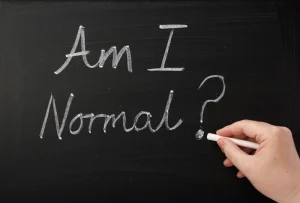
This approach works by encouraging people to say things or role-play behaviors that contradict their beliefs about food and body image. The most important criterion of behavior control is the demand for dependency and obedience to the group, its ideology, and its leadership. For a “total convert” [9] the group’s dogma determines every aspect of behavior; there is no personal choice involved. Freedom of movement is often limited, and permission demanded before any visit to a non-member.

10.3.2 Theories of Persuasion

This is particularly true if the disparity between their beliefs and behaviors involves something that is central to their sense of self. In recent years, psychologists have pointed out that many psychology studies recruit participants from Western countries (North America and Europe) and that doing so neglects the experience of people who live in non-Western cultures. In fact, cognitive dissonance addiction psychologists who study cultural psychology have found that many phenomena that were once assumed to be universal may actually be unique to Western countries. Finally, many of the studies supporting the theory of cognitive dissonance have low ecological validity. For example, turning pegs (as in Festinger’s experiment) is an artificial task that doesn’t happen in everyday life.

Science-Based Ways To Apply Positive CBT
Life is filled with decisions, and decisions (as a general rule) arouse dissonance.
- Each DBI may include several combinations of these activities performed over one or more sessions.
- To function by that expectation of existential consistency, people continually reduce their cognitive dissonance in order to align their cognitions (perceptions of the world) with their actions.
- There has been a great deal of research into cognitive dissonance, providing some interesting and sometimes unexpected findings.
- From this perspective, it is not inconsistency per se that is threatening, but “the threat the inconsistency poses to the perception of self-integrity” (262).
- Do people from non-Western cultures experience cognitive dissonance as well?
- Individuals in the low-dissonance group chose between a desirable product and one rated 3 points lower on an 8-pointscale.
Social pressures

Well-known studies of the growth of knowledge established that new ideas are ignored, usually until the next generation of scientists. Great scientific discoveries may provoke not only fascination but also envy and rivalry. But worse, as established in the 20th century, the first reaction could be a cognitive dissonance, and as a result the novel is ignored. In the Cognitive Consequences of Forced Compliance (1959), the investigators asked students to spend an hour doing tedious tasks; e.g. turning pegs a quarter-turn, at fixed intervals.
- At the far end of the spectrum is total authority over information, or totalitarianism.
- This underlying tension then motivates an individual to make an attitude change that would produce consistency between thoughts and behaviors.
- Cognitive dissonance was measured indirectly by asking participants about changes in their opinion about how enjoyable the task was following the experiment.
- The twenty-dollar group had external justification for their inconsistency–money motivated them to lie to the confederate about the task being interesting when it was actually boring.
According to this self-standards model, contextual variables determine the comparison standard, and it is this standard that determines which dissonance process is most likely to be operative. The concept of cognition was relatively new at the time of the introduction of cognitive dissonance theory. Before that, the relationship between human attitudes and behaviours was understood as a complex process that involved motivational, emotional, affective and perceptual factors (Krech, 2019; Rosenberg, 1966).
- Whenever a person is feeling depressed, or anxious or fearful, they are exhorted to believe and surrender more to the leader or group.
- Later, when the children were told that they could freely play with any toy they wanted, the children in the mild-punishment group were less likely to play with the steam shovel (the forbidden toy), even though they knew that they would no longer receive a punishment.
- The other half, however, given insufficient justification for their behavior, experienced dissonance between the knowledge that the task was boring and the reality that they were misleading a fellow participant into believing the opposite.
- Dissonance can also be experienced vicariously through people of a social group that we identify with.
Dissonance theory also fed theories about system justification (see also Kay et al., 2002; Jost et al., 2003). Moreover, developments on attitudes theory showed that explicit but not implicit attitudes are affected by dissonance (Gawronski and Strack, 2004). There are still debates around the theory that can be traced in Brehm’s (2007) review and a more recent Kenworthy et al. (2011) trans-paradigm theoretical synthesis of cognitive dissonance theory. In this article the authors using modern statistical techniques aim to test five research paradigms. It seems that cognitive dissonance is a theoretical field that will continue to trigger basic and applied research.
Its calculation is summarised in the mathematical expression below (Festinger, 1962). The total tension of a dissonance is the proportion of the inconsistent cognitions to the consistent cognitions that one has, each weighted by its importance. Cognitive dissonance theory, proposed by Festinger, focuses on the discomfort felt when holding conflicting beliefs or attitudes, leading individuals to seek consistency. It is known that emotions of cognitive dissonances often lead to an immediate elimination of the source of discomfort, which is a contradictory knowledge. Because every knowledge contradicts to some other knowledge, cognitive dissonances could have prevented accumulation of knowledge, and the culture itself. The ability to accumulate knowledge and develop culture requires an ability to overcome cognitive dissonances without discarding knowledge.
Theories of Persuasion

In his work on cognitive dissonance, Leon Festinger demonstrated that when there is a conflict between attitude and behavior, individuals are driven to resolve that conflict. The “dissonance” or conflict between what we may believe and what we have actually done creates great tension. When a behavior has been performed and can no longer be changed, we resolve any dissonance by altering our belief about the behavior. Thus, a boring task is afterwards described as interesting, if it was done for little reward. Negative consequences of cognitive dissonance reduction include procrastination or acting seemingly contrary to our values and beliefs. However, it can be beneficial to remind ourselves that it exists as a psychological safety mechanism to help us perceive the world consistently and to protect the perception we have about ourselves.






